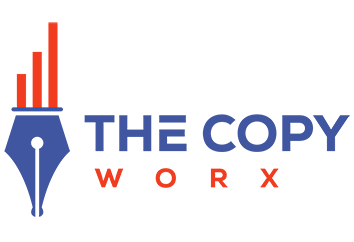Ever run into a brick wall? Hopefully not. Neither have I.
But one of the email copy mistakes I’m about to discuss is almost as painful.
Let’s jump in…
Email mistakes.
Some email mistakes can make people hit the unsubscribe button so fast the delete key pops off and lands in their coffee.
So now they have two problems: an email they don’t want AND a plastic button floating around in their mocha latte.
You don’t want to be the cause of either of those two things.
So here are three major, all-too-common problems to avoid when you’re writing to your audience…
1. You build brick walls of words
 Hence, the brick question above.
Hence, the brick question above.
A wall of words is the quickest way to ensure no one reads your copy.
As I said in a previous post: most people skim. Seeing a lot of words won’t make them slow down regardless of how magnificent your offer.
They’ll skip over it until something catches their eye.
This doesn’t mean you need to leave out all that great info. Just break it up with:
- Bullet points
- White space
- Images
- Boxes
- Short, punchy sentences
2. The grammar police drained the personality out of your copy
Here’s the thing about writing conversationally: You want to write like you talk.
To this end, unless you’re addressing the queen, most of us don’t follow all the grammar rules IRL. And I’m not even sure the queen does, either.
We start sentences with “and” and “but” or “so.” Say “gonna” instead of “going to” and so on. It can be a bit messy compared with how we were taught in English class. (Sorry, Miss Anderson!)
If you’re a stickler for proper English, reading a piece of conversational copy will make your ears bleed. Or your eyes burn. So be warned.
Real talk equals real personality.

3. You make your emails all about YOU
You’ve probably heard this a million times. And it never sounds less harsh to hear it again, but no one cares about you.
Let me backtrack.
People DO care about you. I do, for one. (Seriously, if you’re reading this you’re clearly smart and overall all right in my book.)
But not people who are reading your emails. They’re hoping to find something of value for themselves.
They want to know what’s in it for me (WIIFM)?
It’s not a bad thing. We all do it. If you’ve ever looked for recipe for roasted potatoes and had to weed through 14 pages of backstory of the history of potatoes, the origin of the farm in Ireland that made this particular variety so special to get to it, you’ll know what I mean.
It’s fine to relate a story about your life if it comes back around to them… but you need to get there pretty quickly or they’ll bail.
AND your story ideally should relate to something they can do, too (assuming it’s a story about how you resolved a problem they may also be experiencing).
How will YOU use these to make sure your emails pack the right punch? Flip the right switch? Ignite the right fuse?
Let me know in the comments below. Better yet, share this with a friend who’s looking to improve their email copy.
Other posts you may enjoy:
How to Write Targeted Copy Readers Can’t Ignore
3 Easy Email Tactics You Should Be Using
3 Email Marketing Myths that Leave Money on the Table
Got a question? Hit me up at Linda@LindaMeloneWrites.com and I’ll get back to you ASAP.




